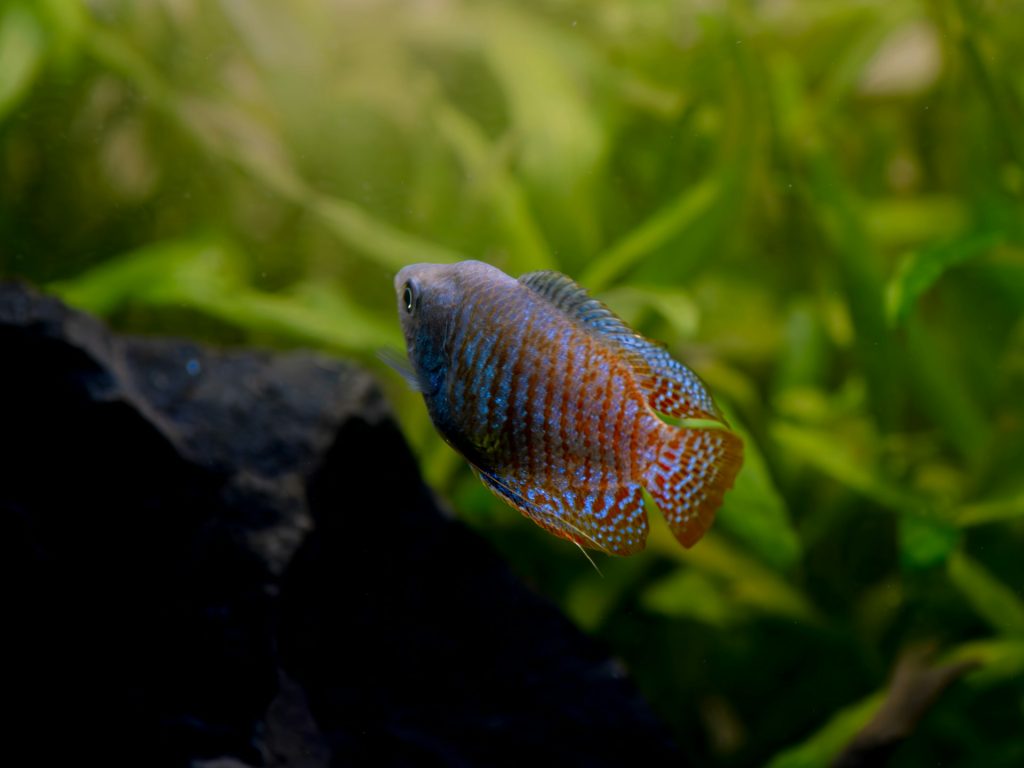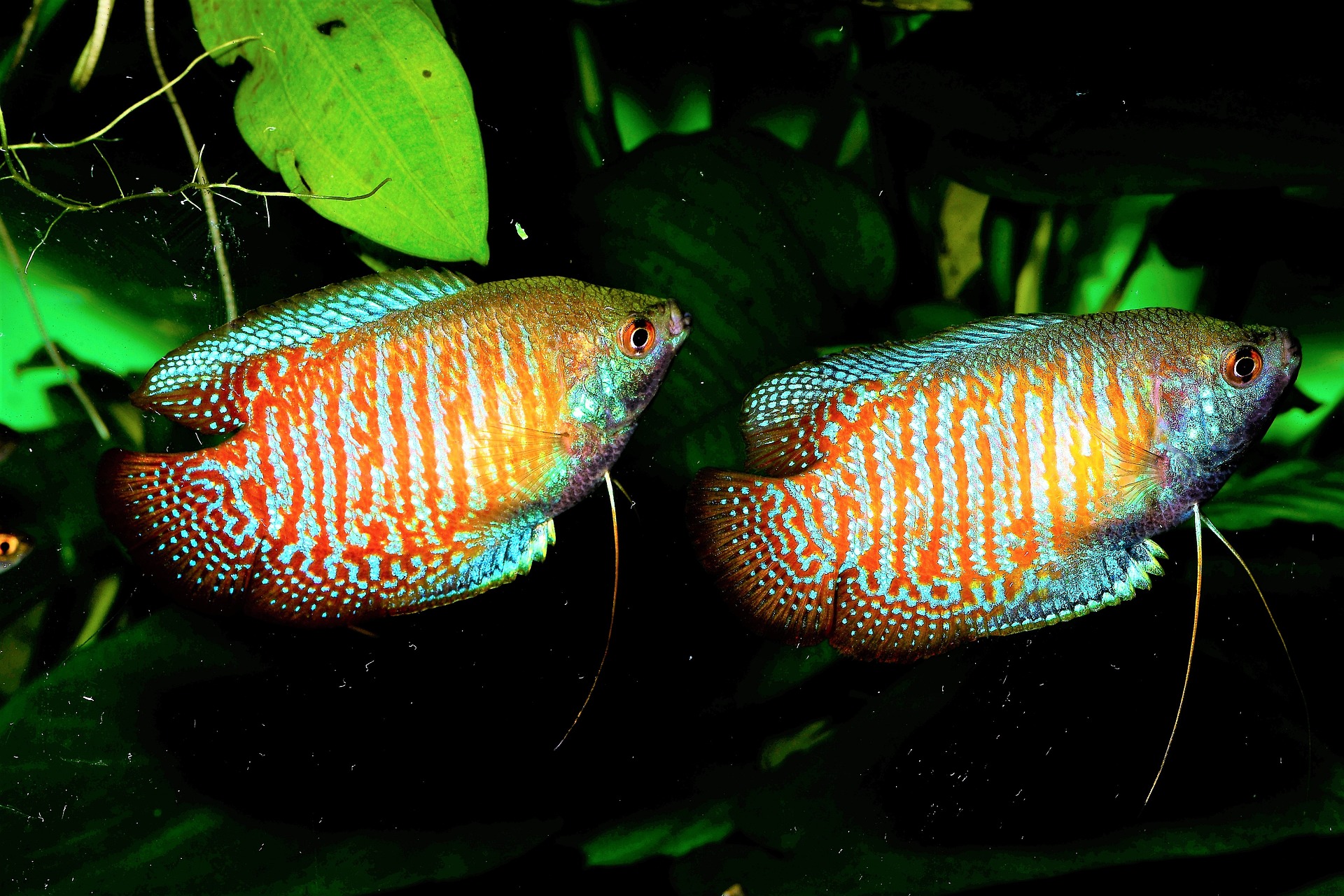Last Updated on February 18, 2024 by Dustin
Imagine a jewel-toned fish, gliding gracefully through a vibrant underwater jungle. This isn’t a scene from a tropical island, but your very own aquarium, home to the dazzling dwarf gourami. Their iridescent scales and peaceful demeanor make them beloved residents, but a crucial question lingers: do these shimmering jewels require a heater to thrive in their miniature underwater paradise? Fear not, fellow aquarists, for this article dives deep into the world of dwarf gourami care, uncovering the truth about temperature regulation and ensuring your captivating companions live a life of aquatic bliss.
Quick Dwarf Gourami Stats:
- Size: 2-3 inches (5-8 cm)
- Water temperature: 75-80°F (24-27°C) – Crucially, they cannot tolerate temperatures below 72°F (22°C)
- pH: 6.0-7.5
- Diet: Omnivorous, enjoys both plant and animal matter
- Minimum tank size: 10 gallons (38 liters) for a single dwarf gourami
The Heat of the Matter: Friend or Foe?
Dwarf gouramis, like many tropical fish, are cold-blooded creatures. Their metabolism and immune system rely on specific temperature ranges to function properly. We’ve learned from experience that while their labyrinth organ allows them to breathe atmospheric air, it’s not a substitute for a warm aquatic environment. Unlike their air-breathing cousins, Betta fish, dwarf gouramis can not survive for extended periods in a small aquarium without a source of heat. So, to answer the burning question: yes, dwarf gouramis absolutely need a heater. Exposing them to prolonged periods below their ideal temperature range can lead to:
- Weakened immune system: Making them susceptible to diseases like ich and fin rot.
- Reduced activity and appetite: Leading to lethargy and malnutrition.
- Slowed growth and development: Hindering their overall health and lifespan.
Choosing the Right Heater for Your Dwarf Gouramis:
Selecting the right heater is crucial for maintaining the optimal temperature range. Choose a heater with adjustable settings and sufficient wattage for your tank size. Remember, stability is key: avoid drastic temperature fluctuations, aiming for a consistent 75-80°F (24-27°C). Consider using a digital thermometer to monitor temperature accurately.
Expert Advice: Building a Thriving Gourami Paradise
While a heater is essential, it’s just one piece of the puzzle. Provide your gouramis with a spacious tank decorated with live plants for hiding and grazing, offer them a varied diet of high-quality pellets, flakes, and occasional treats, and maintain consistent water parameters. At Home Aquarium Supplies, we combine our experience and knowledge to offer resources on providing proper care for a variety of fish, including dwarf gouramis. We hope that these comprehensive guides can help you create the perfect aquatic haven for your shimmering companions.

In Conclusion: A Warm Welcome Awaits
So, do dwarf gouramis need a heater? The answer is a resounding yes. A heater isn’t just a luxury, it’s a necessity for their well-being and survival. By providing the right temperature and attending to their overall needs, you can ensure your dwarf gouramis live long, vibrant lives, their iridescent scales forever shimmering in their warm and welcoming underwater paradise. What other questions do you have about creating the perfect home for your dazzling dwarf gouramis? Here are some common Q&As.
Dwarf Gourami Q&A:
Q. What kind of substrate do they need?
A. Sand or fine gravel is best, as they like to sift for food.
Q. Are they aggressive?
A. Generally peaceful, but males can be territorial towards each other. Avoid keeping multiple males in small tanks.
Q. What tank mates are good for them?
A. Peaceful community fish like rasboras, tetras, or corydoras. Avoid large, aggressive fish.
Q. Do they need a filter?
A. Yes, even though they can breathe air, a filter helps maintain water quality and remove waste.
